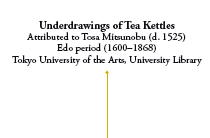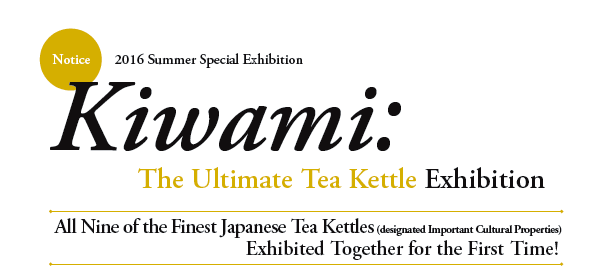


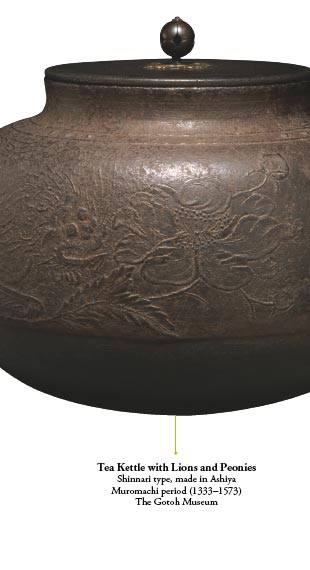
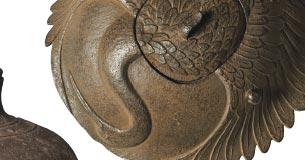


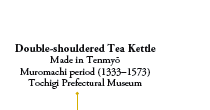
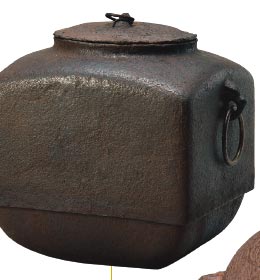

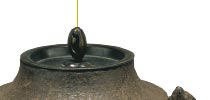
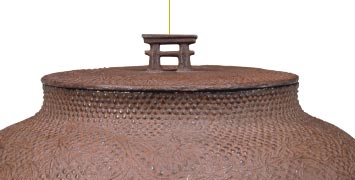
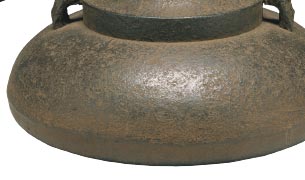
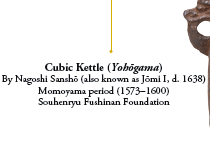

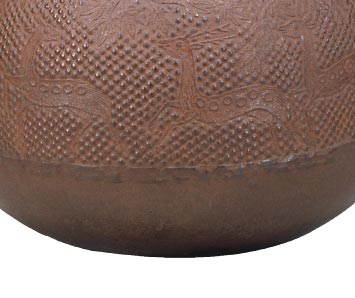
The tea kettle is one of the most important utensils in
chanoyu, the
traditional practice of serving and drinking matcha, or powdered
green tea. Holding a tea gathering is even described as “putting on
the tea kettle.” The origin of tea kettles in Japan dates back to
the Nara period (710–794), when it was used as a practical implement
to boil water in daily life as well as for religious rites in
Buddhist temples and Shinto shrines. In time, the custom of tea
drinking was introduced to Japan from China and during the Muromachi
period (1333–1573), when utensils began to be aesthetically
appreciated, beautiful tea kettles in the eyes of their beholders
came to be made. During the Momoyama period (1573–1600), the tea
master Sen no Rikyū (1522–1591) perfected wabi cha, a style of tea
practice, which emphasizes rustic elegance. With the formalization
of this tradition, kettles also evolved as “tea kettles,” and
changed into forms that suited the aesthetics of tea practitioners.
The prominent researcher of tea kettles, Professor Harada Kazutoshi (The University Art Museum, Tokyo University of the Arts) curated this exhibition, which features classical examples, such as the Ashiya and Tenmyō kettles, as well as early Kyoto and Edo-period kettles, such as works by the master kettle maker Yojirō. These exemplary tea kettles will be explored through their history from the Nara to early modern period and their beauty. Also, all nine Important Cultural Property-designated tea kettles (none have the designation of National Treasure) will be displayed together for the first time.
The prominent researcher of tea kettles, Professor Harada Kazutoshi (The University Art Museum, Tokyo University of the Arts) curated this exhibition, which features classical examples, such as the Ashiya and Tenmyō kettles, as well as early Kyoto and Edo-period kettles, such as works by the master kettle maker Yojirō. These exemplary tea kettles will be explored through their history from the Nara to early modern period and their beauty. Also, all nine Important Cultural Property-designated tea kettles (none have the designation of National Treasure) will be displayed together for the first time.
